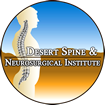The goal of scoliosis surgery is to stop the progression of and reduce an abnormal spinal curve to the extent possible. In patients for whom it’s appropriate, scoliosis correction surgery may be performed using minimally invasive surgical techniques.
What Is Minimally Invasive Scoliosis Correction Surgery?
There are several approaches to spinal surgery for scoliosis. Each involves fusing – or joining together – the vertebrae in the curve to be corrected. The goal is to both reduce the abnormal curve in the spine and prevent it from getting worse.
Traditionally, surgeons have performed spinal fusion for the correction of scoliosis as an “open” procedure, which involves making an incision over the entire curvature, and then stripping and retracting muscle and tissue to get a clear view of the spine and easy access to the vertebrae to be fused.
However, many innovations and advancements have been developed in the past several years that allow surgeons to achieve the goals of open surgery, yet with much less trauma to the surrounding muscles and tissue.
Called endoscopic surgery, this approach employs less invasive surgical techniques, such as muscle dilation, that enable surgeons to perform fusion surgery through several small incisions rather than one long one.
To dilate the muscles, the surgeon uses a series of sequential dilators, or tubes, to gently separate the muscle fibers to create a small “tunnel,” which allows the surgeon to view the spine while leaving the muscle virtually intact.
Potential advantages of the minimally invasive, endoscopic approach include improved visualization of the chest cavity and spinal column, greater flexibility for instrumentation placement and a relatively quicker post-operative recovery.
Why Do I Need This Procedure?
Endoscopic surgery is not appropriate for everyone or every curve; only your doctor can determine whether you are a suitable candidate for this type of procedure. Endoscopic surgery is best suited for scoliosis curvatures in the thoracic spine, or upper back/chest area.
Lumbar (low back) and thoracolumbar (mid- to lower-back) curves are better suited to the traditional, open technique for spinal fusion. The procedure also would not be recommended for patients with a double thoracic curve, neuromuscular curves, significant kyphosis (hunching of the spine) or lung problems.
How Is Endoscopic/Minimally Invasive Scoliosis Surgery Performed?
For an endoscopic procedure, you’ll be sedated under general anesthesia and positioned on a radiolucent operating table, which allows the surgeon to take x-rays of your spine during the procedure with a fluoroscope. This helps ensure correct incision and instrument placement.
During the procedure, your surgeon typically will:
- Make several very small incisions, depending on the location of the spinal curve, the number of levels to be fused and the vantage point needed to visualize the spine for instrument placement.
- Gently cut and pull away the pleura, or thin membrane that lines the chest cavity, from the vertebral bodies to access the spinal column.
- Remove disc material from in between the vertebrae involved in the curve. (This increases the flexibility of the curve and prepares a large surface area for fusion.)
- Remove a portion of the rib if needed for bone graft material. (If the ribs are particularly prominent as a result of the scoliosis and form a “rib hump,” a portion of this prominence may be removed (thoracoplasty) to improve the patient’s aesthetic appearance.
- Attach screws to the vertebrae to be corrected using the visual guidance of an endoscope – a tiny camera inserted through one of the small incisions – and fluoroscope.
- Insert bone graft material into the disc space.
- Insert a custom-fitted rod into the chest cavity and attach it to the screws on the vertebrae, and then tighten the screws to achieve as much correction as possible.
- Retract the tubes and imaging equipment, and then close the incision.
How Long Will It Take Me To Recover?
The recovery period for spinal fusion will vary depending on the procedure and your body’s ability to heal and firmly fuse the vertebrae together. Your surgeon may recommend that you wear a brace after this type of surgery.
Work closely with your spinal surgeon to determine the appropriate recovery protocol for you, and follow his or her instructions “to the letter” to optimize the healing process.
Will I Need Another Operation To Remove The Instrumentation?
Not usually. The rods, hooks, screws and other devices your surgeon may use to stabilize your spine are typically left in the body, even after your bones are completely fused. In rare instances, infection or other complications may warrant implant removal.
Are There Any Potential Risks Or Complications?
All treatment and outcome results are specific to the individual patient. Results may vary. Complications such as infection, nerve damage, blood loss and bowel and bladder problems are some of the potential risks of spinal surgery. Additional risks associated with scoliosis surgery may include rod or other implant displacement and failure of the vertebrae to fuse.
Please consult your physician for a complete list of indications, warnings, precautions, adverse effects, clinical results and other important medical information that pertains to scoliosis surgery.
